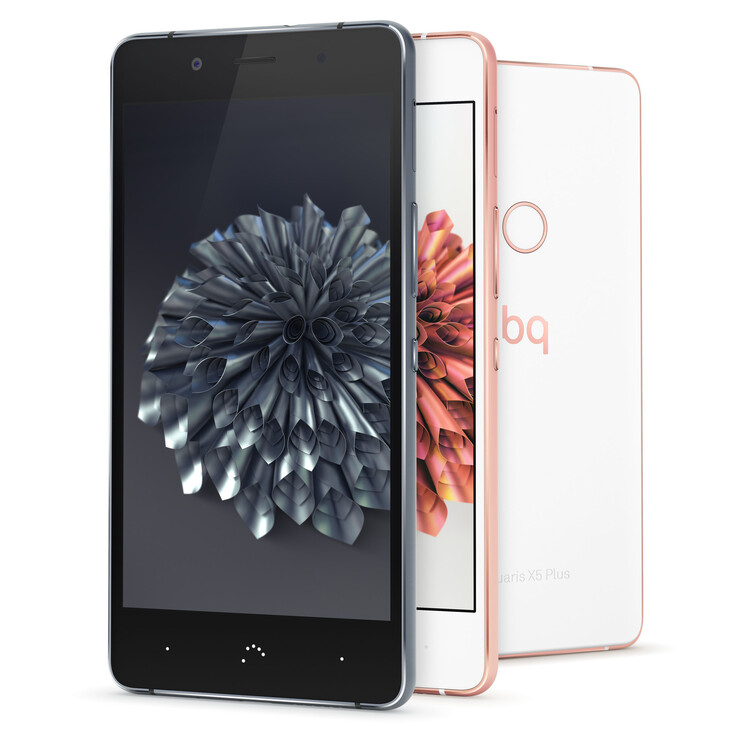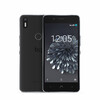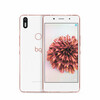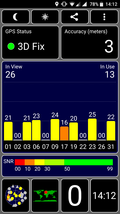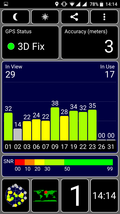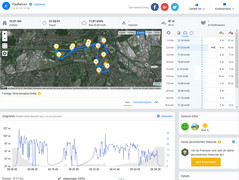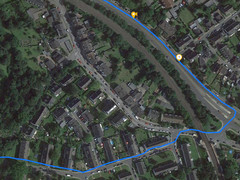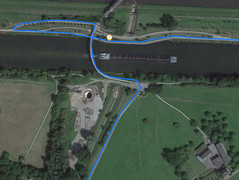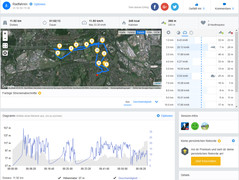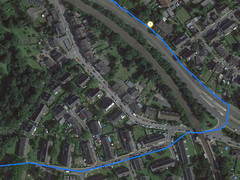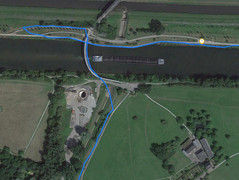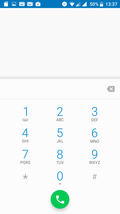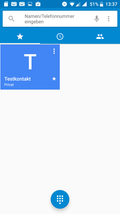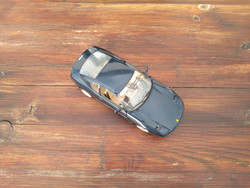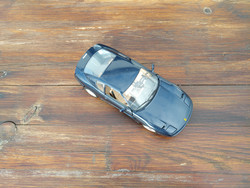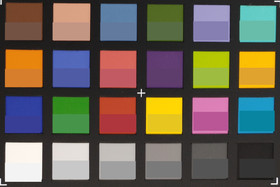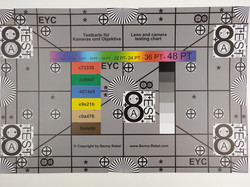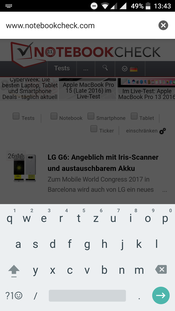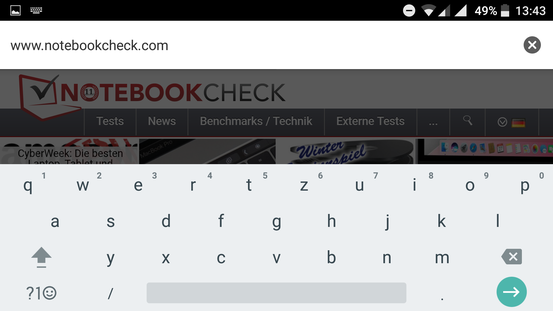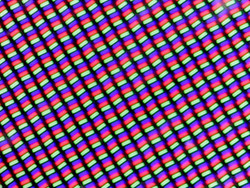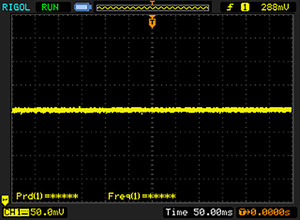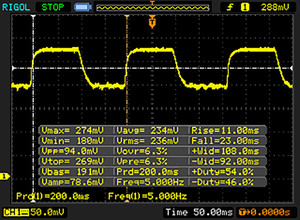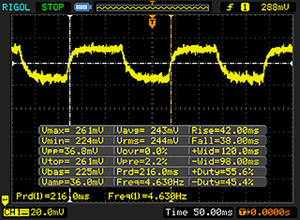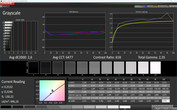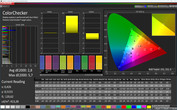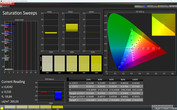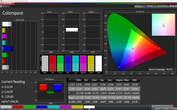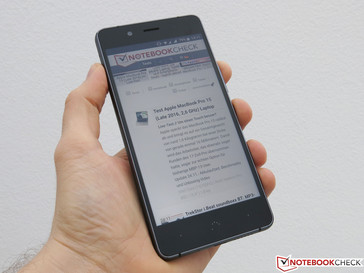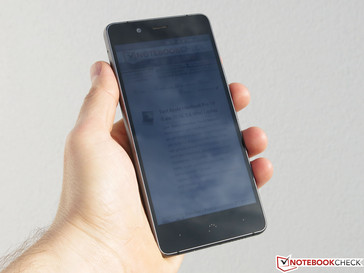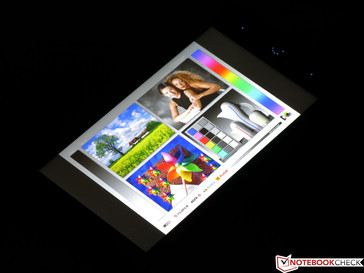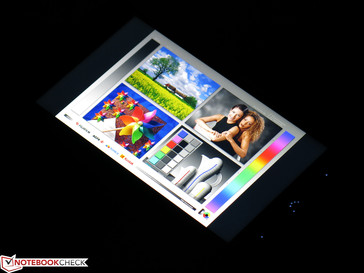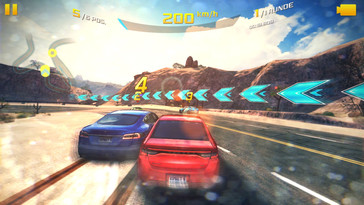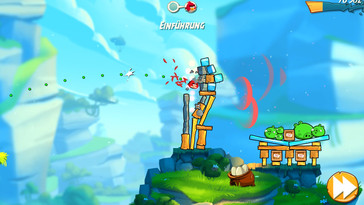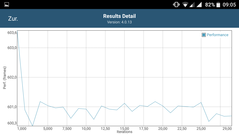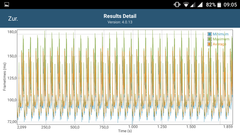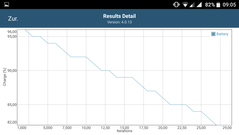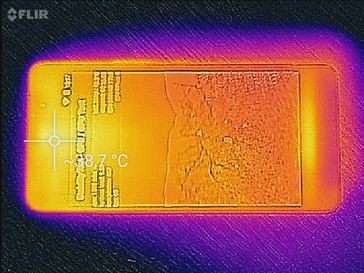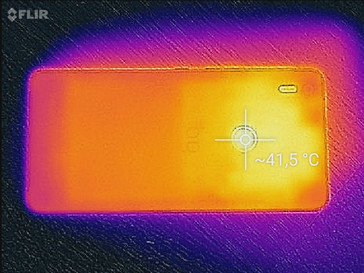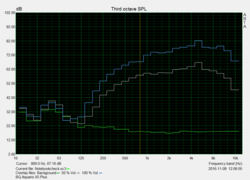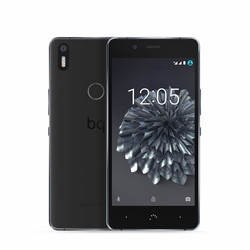BQ Aquaris X5 Plus Smartphone Review

For the original German review, see here.
If you are looking for a mid-range smartphone, you are in luck: market giants, like Samsung, Sony and Huawei, and countless smaller manufacturers are producing attractive devices for this market. The relatively young Spanish manufacturer, BQ, is now offering the Aquaris X5 Plus: 5-inch FHD display, fingerprint sensor and Snapdragon-652-SoC. The buyer can choose between 16 GB internal storage and 2 GB of RAM (299.90 Euros/~$312) or 32 GB internal storage and 3 GB of RAM (40 Euros/~$42 more). Our test model has the former, smaller capacities. The device is available in black and white.
Direct competition (price up to 300 Euros/~$312) includes models, such as, the Sony Xperia XA, the ZTE Axon 7 Mini and the Huawei P9 lite. We are including more expensive phones, like the Samsung Galaxy A5 (2016) and the Gigaset ME, as their prices have recently been cut and potential buyers from this segment might be interested in them as well.
Case
The test model measures 145 x 70 x 7.7 mm (~5.7 x 2.8 x 0.3 in) and weighs 145 grams (~5.1 oz), which is typical for a 5-inch device. The touchscreen is protected by strong Dinorex glass, but we were soon able to recognize scratches on it. The back of the device is slightly rough and, although it does not feel as great as a glass or aluminum back, this surface allows the user to have a better grip on the phone. The metal border of the Aquaris X5 Plus provides a high level of sturdiness, preventing users from bending the device. However, when we pressed on the screen, we could see visible deformations of the display.
The workmanship quality is acceptable. The transition between the touchscreen and the border should be smoothed out so as to improve the feel of the device.
The device has two side flaps: the left side has two Nano SIM card slots and the right side has a microSD card slot. The battery cannot be removed.
Connectivity
Our test model has 16 GB internal storage and roughly 10.5 GB is free for the user. If you want more storage space, you can install a microSD card. The card can be formatted as internal or external storage. We appreciate that BQ has given the user the freedom of choice.
The device comes with a micro USB port that supports USB OTG. It also offers Miracast, Wi-Fi Direct and NFC. The 3.5 mm audio jack and RGB notification LED are integrated as well.
Software
The Aquaris is being deployed with stock Android 6.0.1. In the settings, the user can configure the notification LED or the equalizer. Furthermore, it is possible to swap between the current and the previously accessed App by tapping the right navigation key twice. We like the frequency of updates: during the month of November, we received an up-to-date security patch and the manufacturer is planning an upgrade to Android 7.
We like that the phone comes without unnecessary Apps pre-installed: the standard Google Apps and the BQ Plus App can be found on the device. The BQ Plus App includes information about how to extend the warranty.
Communication and GPS
The BQ Aquaris X5 Plus supports Dual SIM Dual standby. One SIM slot can use LTE networks while the other has to use 2G or 3G networks. It is possible to change which SIM uses which network without restarting the phone. The reception in urban areas was quite good.
The test model can connect to WLAN networks of the 2.4 or 5 GHz frequency The device performs great with 348 MB/s (receiving) and 258 MB/s (sending). Only a few devices are faster, like the Google high-end model, the Pixel XL. The WLAN range is acceptable.
The wireless communication is possible thanks to Bluetooth 4.2, Wi-Fi Direct and NFC.
Outdoors and indoors, the Aquaris X5 Plus locks on the location of the user quickly and with an accuracy of up to 3 meters (~10 feet). It is one of the first smartphones to use GPS, GLONASS and the brand-new GALILEO satellite system. The Qualcomm IZat location service can also be turned on.
We took the device for a bike ride with our professional biking GPS, the Garmin Edge 500. The smartphone deviated slightly from the route of the professional GPS near the bridge. Overall, the BQ Aquaris X5 Plus had a roughly 2.4% (290 meters/317 yards) shorter path than the one recorded by the Garmin GPS. As such, our test model is quite precise.
Telephone and Speech Quality
The telephone App is the standard software from Android Marshmallow. It has a favorites list, a numeric pad, a caller list and direct access to the contacts database. The upper region always has a search bar.
For normal calls, the Aquaris X5 Plus provides clear audio for both sides. The speaker does a good job as long as the user remains outside noisy environments.
Cameras
The 8 MP Sony IMX219 sensor and f/2.0 shutter ensure good image quality with the front camera (in good lighting conditions). In poor lighting, the details are not recorded properly and the picture blurs. However, the blurring stays within acceptable limits. Videos can be recorded in Full HD and are quite smooth thanks to the 30 frames per second. It is possible to record with 60 fps, but the image is cut down significantly. It is a little sad that BQ has taken the front flash (from the Aquaris X5) out of its "Plus" model.
The main camera of the Sony IMX298 sensor offers 16 MP and an f/2.0 shutter. The test model provides sharp captures in daylight, which definitely benefit from auto HDR mode (scene 2). Unfortunately, the quality drops in lower lighting conditions significantly: many details are lost when the module attempts to suppress the blurring, the auto-focus does not always do a good job and the image may turn out shaky due to the missing picture stabilizer (scene 1 and 3). Depending on the subject, the dual-LED flash can be helpful. If you like taking panorama shots, you might be disappointed: they have low vertical resolution and appear washed out. Videos can be captured in 4K resolution at 30 frames per second. Outdoors, many details can be captured, but the playback always stutters slightly. Parts of the movie, which have similar content, can end up suffering from the high compression. Alternatively, the camera can capture videos in Full HD at 60 frames per second. The auto-focus is active, but especially indoors, it is not always accurate.
The photo App has a manual mode and multiple scene modes. It can be called up by double-clicking on the power button (when in standby mode). It is possible to swipe between the main functions (panorama, photo, video and "Motions") by using a swipe to the side. This transition takes a little time. We like that the manufacturer keeps updating the App and adding new functions. During our testing period, we received an update that included a function for a 120 fps slow motion mode.
Accessories and Warranty
The Aquaris X5 Plus is delivered in a nice packet. The device, a USB cable, a slot tool, the warranty information and an illustrated guide to get started with the device are included. A headset or a power adapter is not included. The latter can be purchased from the manufacturer (online shop) for 5.95 Euros (~$6). Matching rubber or hard-plastic cases can also be found there.
While the previous generation of BQ models was being sold with a 5-year warranty, the test model in front of us has a mere 2-year manufacturer’s warranty. The manufacturer will repair the device (even if the damage was inflicted by the user) as long as the customer has purchased the 29.90 Euros/year (~$31) warranty option for the BQ Plus.
Please see our Guarantees, Return Policies & Warranties FAQ for country-specific information.
Input Devices and Interface
The BQ Aquaris X5 Plus uses the standard Google keyboard. Thanks to the precise touchscreen, the user can input text quite fast. If the vibration feedback is too strong, you can adjust the level in the system settings. Alternatively, you can use swipe gestures to input text on the keyboard.
The power button and the volume rocker have clear, yet slightly hard, pressure points. They are seamlessly integrated in the metal border of the phone. If you touch the keys lightly, they creak a little. The space below the display is assigned to three capacitive navigation keys. BQ has stuck to the standard Android look and placed the "Back" key on the left side (no caption provided). On-screen navigation keys can be turned on when needed.
The fingerprint sensor reads input reliably and fast. Its placement is a little poor as it is on the back of the phone. This means it cannot be used when the device is lying on the table. We like that tapping it twice wakes the screen up. It is also possible to do the opposite: two quick taps to the status bar will send the phone to standby mode. These features must be turned on the in the settings before they can be used.
Subjectively, the performance of the test model is decent. Animations run without issues and the App start without long waiting times. Content is quickly adjusted to the orientation of the screen.
Display
The 5-inch IPS panel of the BQ Aquaris X5 Plus has a resolution of 1920x1080 pixels, which results in a pixel density of 441 ppi. This is quite sharp for content.
The "Expanded Brightness" option will allow the display to reach 650 cd/m² with manual adjustments and while displaying an entirely white image. The values do not change significantly when we display evenly distributed dark and bright areas (Average Picture Level/APL 50) or when the brightness sensor is turned on. The Samsung Galaxy A5 (2016) is the only device from the circle of comparison devices which has a similarly bright screen, but only with the automatic brightness regulation active. The high black value of 0.93 cd/m² results in a modest contrast of 688:1 and the illumination of 85% leaves room for improvement. Subjectively, we did not notice any disturbing, uneven lighting zones. We like that the backlight of the panel does not use PWM controls as this prevents distracting flickering.
| |||||||||||||||||||||||||
Brightness Distribution: 85 %
Center on Battery: 640 cd/m²
Contrast: 688:1 (Black: 0.93 cd/m²)
ΔE ColorChecker Calman: 2.8 | ∀{0.5-29.43 Ø4.78}
ΔE Greyscale Calman: 2.6 | ∀{0.09-98 Ø5}
Gamma: 2.35
CCT: 6477 K
| BQ Aquaris X5 Plus IPS, 1920x1080, 5" | Sony Xperia XA IPS, 1280x720, 5" | ZTE Axon 7 Mini AMOLED, 1920x1080, 5.2" | Huawei P9 Lite IPS, 1920x1080, 5.2" | Samsung Galaxy A5 2016 Super AMOLED, 1920x1080, 5.2" | Gigaset ME IPS, 1920x1080, 5" | |
|---|---|---|---|---|---|---|
| Screen | ||||||
| Brightness middle (cd/m²) | 640 | 518 -19% | 327 -49% | 505 -21% | 378 -41% | 445 -30% |
| Brightness (cd/m²) | 609 | 475 -22% | 335 -45% | 468 -23% | 380 -38% | 456 -25% |
| Brightness Distribution (%) | 85 | 81 -5% | 94 11% | 88 4% | 91 7% | 93 9% |
| Black Level * (cd/m²) | 0.93 | 0.61 34% | 0.74 20% | 0.38 59% | ||
| Contrast (:1) | 688 | 849 23% | 682 -1% | 1171 70% | ||
| Colorchecker dE 2000 * | 2.8 | 6.8 -143% | 6.3 -125% | 4.1 -46% | 1.95 30% | 4.29 -53% |
| Colorchecker dE 2000 max. * | 5.7 | 11.4 -100% | 11.4 -100% | 5.8 -2% | 3.09 46% | 7.89 -38% |
| Greyscale dE 2000 * | 2.6 | 7 -169% | 7.1 -173% | 4.9 -88% | 1.86 28% | 4.97 -91% |
| Gamma | 2.35 94% | 2.35 94% | 2.25 98% | 2.5 88% | 2.13 103% | 2.57 86% |
| CCT | 6477 100% | 8151 80% | 7637 85% | 7116 91% | 6376 102% | 7625 85% |
* ... smaller is better
Screen Flickering / PWM (Pulse-Width Modulation)
| Screen flickering / PWM not detected | |||
In comparison: 53 % of all tested devices do not use PWM to dim the display. If PWM was detected, an average of 8111 (minimum: 5 - maximum: 343500) Hz was measured. | |||
Display Response Times
| ↔ Response Time Black to White | ||
|---|---|---|
| 34 ms ... rise ↗ and fall ↘ combined | ↗ 11 ms rise | |
| ↘ 23 ms fall | ||
| The screen shows slow response rates in our tests and will be unsatisfactory for gamers. In comparison, all tested devices range from 0.1 (minimum) to 240 (maximum) ms. » 90 % of all devices are better. This means that the measured response time is worse than the average of all tested devices (20.2 ms). | ||
| ↔ Response Time 50% Grey to 80% Grey | ||
| 80 ms ... rise ↗ and fall ↘ combined | ↗ 42 ms rise | |
| ↘ 38 ms fall | ||
| The screen shows slow response rates in our tests and will be unsatisfactory for gamers. In comparison, all tested devices range from 0.165 (minimum) to 636 (maximum) ms. » 99 % of all devices are better. This means that the measured response time is worse than the average of all tested devices (31.6 ms). | ||
The color calibration of the display is good: the average Delta values of 2.8 (colors) and 2.6 (gray levels) are quite close to the ideal range (below 3). The color temperature of 6,477 K is almost ideal (optimal is 6,500 K). The gray levels do not have a color tinge.
Performance
The heart of the BQ Aquaris X5 Plus is a Snapdragon-652-SoC, which offers 4 conservative Cortex A53 cores (up to 1.4 GHz) and 4 very powerful Cortex A72 cores (up to 1.8 GHz). This is a 64-bit processor, but the OS runs in 32-bit mode. The graphics output is handle by the Adreno 510 GPU, which clocks at 600 MHz.
The performance of the Aquaris X5 Plus is above average, as is shown by the clear lead our test model carves out in all browser benchmarks and AnTuTu v6. Furthermore, in BaseMark OS II and PCMark, the device takes second place indisputably in the table. Thanks to the high GPU performance of high-end models, like the Gigaset ME, our phone places a little lower in GPU tests. Furthermore, the Sony Xperia XA has an advantage in on-screen tests, due to its lower screen resolution.
The internal storage of the Aquaris X5 Plus performs at an acceptable level. Although the read speeds are decent in comparison to the other devices, the sequential write speeds leave a lot to be desired (placing our device near the bottom of the table). The memory card slot is as fast as that of the competitors (Sony Xperia XA and ZTE Axon 7 Mini). With a read speed of 73.19 MB/s and a write speed of 54.87 MB/s, the device can handle our reference card quite well (Toshiba Exceria Pro M401 THN-M401S0640E2, UHS-I Class 3, max. read speed: 95 MB/s, max. write speed: 80 MB/s).
| AnTuTu v6 - Total Score (sort by value) | |
| BQ Aquaris X5 Plus | |
| Sony Xperia XA | |
| ZTE Axon 7 Mini | |
| Huawei P9 Lite | |
| Samsung Galaxy A5 2016 | |
| Gigaset ME | |
| Geekbench 4.0 | |
| 64 Bit Multi-Core Score (sort by value) | |
| BQ Aquaris X5 Plus | |
| ZTE Axon 7 Mini | |
| 64 Bit Single-Core Score (sort by value) | |
| BQ Aquaris X5 Plus | |
| ZTE Axon 7 Mini | |
| Compute RenderScript Score (sort by value) | |
| BQ Aquaris X5 Plus | |
| PCMark for Android - Work performance score (sort by value) | |
| BQ Aquaris X5 Plus | |
| Sony Xperia XA | |
| ZTE Axon 7 Mini | |
| Huawei P9 Lite | |
| Samsung Galaxy A5 2016 | |
| Gigaset ME | |
| Octane V2 - Total Score (sort by value) | |
| BQ Aquaris X5 Plus | |
| Sony Xperia XA | |
| ZTE Axon 7 Mini | |
| Huawei P9 Lite | |
| Samsung Galaxy A5 2016 | |
| Gigaset ME | |
| Mozilla Kraken 1.1 - Total (sort by value) | |
| BQ Aquaris X5 Plus | |
| Sony Xperia XA | |
| ZTE Axon 7 Mini | |
| Huawei P9 Lite | |
| Samsung Galaxy A5 2016 | |
| Gigaset ME | |
| JetStream 1.1 - Total Score (sort by value) | |
| BQ Aquaris X5 Plus | |
| Sony Xperia XA | |
| ZTE Axon 7 Mini | |
| Huawei P9 Lite | |
| Samsung Galaxy A5 2016 | |
| Gigaset ME | |
| GFXBench (DX / GLBenchmark) 2.7 | |
| T-Rex Onscreen (sort by value) | |
| BQ Aquaris X5 Plus | |
| Sony Xperia XA | |
| ZTE Axon 7 Mini | |
| Huawei P9 Lite | |
| Samsung Galaxy A5 2016 | |
| Gigaset ME | |
| 1920x1080 T-Rex Offscreen (sort by value) | |
| BQ Aquaris X5 Plus | |
| Sony Xperia XA | |
| ZTE Axon 7 Mini | |
| Huawei P9 Lite | |
| Samsung Galaxy A5 2016 | |
| Gigaset ME | |
| GFXBench 3.0 | |
| 1920x1080 1080p Manhattan Offscreen (sort by value) | |
| BQ Aquaris X5 Plus | |
| Sony Xperia XA | |
| ZTE Axon 7 Mini | |
| Huawei P9 Lite | |
| Samsung Galaxy A5 2016 | |
| Gigaset ME | |
| on screen Manhattan Onscreen OGL (sort by value) | |
| BQ Aquaris X5 Plus | |
| Sony Xperia XA | |
| ZTE Axon 7 Mini | |
| Huawei P9 Lite | |
| Samsung Galaxy A5 2016 | |
| Gigaset ME | |
| GFXBench 3.1 | |
| 1920x1080 Manhattan ES 3.1 Offscreen (sort by value) | |
| BQ Aquaris X5 Plus | |
| Sony Xperia XA | |
| ZTE Axon 7 Mini | |
| Huawei P9 Lite | |
| Gigaset ME | |
| on screen Manhattan ES 3.1 Onscreen (sort by value) | |
| BQ Aquaris X5 Plus | |
| Sony Xperia XA | |
| ZTE Axon 7 Mini | |
| Huawei P9 Lite | |
| Gigaset ME | |
| 3DMark | |
| 1280x720 offscreen Ice Storm Unlimited Physics (sort by value) | |
| BQ Aquaris X5 Plus | |
| Sony Xperia XA | |
| ZTE Axon 7 Mini | |
| Huawei P9 Lite | |
| Samsung Galaxy A5 2016 | |
| Gigaset ME | |
| 1280x720 offscreen Ice Storm Unlimited Graphics Score (sort by value) | |
| BQ Aquaris X5 Plus | |
| Sony Xperia XA | |
| ZTE Axon 7 Mini | |
| Huawei P9 Lite | |
| Samsung Galaxy A5 2016 | |
| Gigaset ME | |
| 1280x720 offscreen Ice Storm Unlimited Score (sort by value) | |
| BQ Aquaris X5 Plus | |
| Sony Xperia XA | |
| ZTE Axon 7 Mini | |
| Huawei P9 Lite | |
| Samsung Galaxy A5 2016 | |
| Gigaset ME | |
| 2560x1440 Sling Shot OpenGL ES 3.0 Physics (sort by value) | |
| BQ Aquaris X5 Plus | |
| Sony Xperia XA | |
| ZTE Axon 7 Mini | |
| Huawei P9 Lite | |
| Samsung Galaxy A5 2016 | |
| 2560x1440 Sling Shot OpenGL ES 3.0 Graphics (sort by value) | |
| BQ Aquaris X5 Plus | |
| Sony Xperia XA | |
| ZTE Axon 7 Mini | |
| Huawei P9 Lite | |
| Samsung Galaxy A5 2016 | |
| 2560x1440 Sling Shot OpenGL ES 3.0 (sort by value) | |
| BQ Aquaris X5 Plus | |
| Sony Xperia XA | |
| ZTE Axon 7 Mini | |
| Huawei P9 Lite | |
| Samsung Galaxy A5 2016 | |
| AndroBench 3-5 | |
| Random Write 4KB (sort by value) | |
| BQ Aquaris X5 Plus | |
| Sony Xperia XA | |
| ZTE Axon 7 Mini | |
| Huawei P9 Lite | |
| Samsung Galaxy A5 2016 | |
| Gigaset ME | |
| Random Read 4KB (sort by value) | |
| BQ Aquaris X5 Plus | |
| Sony Xperia XA | |
| ZTE Axon 7 Mini | |
| Huawei P9 Lite | |
| Samsung Galaxy A5 2016 | |
| Gigaset ME | |
| Sequential Write 256KB (sort by value) | |
| BQ Aquaris X5 Plus | |
| Sony Xperia XA | |
| ZTE Axon 7 Mini | |
| Huawei P9 Lite | |
| Samsung Galaxy A5 2016 | |
| Gigaset ME | |
| Sequential Read 256KB (sort by value) | |
| BQ Aquaris X5 Plus | |
| Sony Xperia XA | |
| ZTE Axon 7 Mini | |
| Huawei P9 Lite | |
| Samsung Galaxy A5 2016 | |
| Gigaset ME | |
| Sequential Write 256KB SDCard (sort by value) | |
| BQ Aquaris X5 Plus | |
| Sony Xperia XA | |
| ZTE Axon 7 Mini | |
| Huawei P9 Lite | |
| Sequential Read 256KB SDCard (sort by value) | |
| BQ Aquaris X5 Plus | |
| Sony Xperia XA | |
| ZTE Axon 7 Mini | |
| Huawei P9 Lite | |
* ... smaller is better
Games
Despite the high resolution of 1920x1080 pixels, the Adreno 510 GPU manages to run demanding games, like Asphalt 8, smoothly at high settings. Less hardware-hungry games, like Angry Birds 2, are no hurdle for our test model.
The internal sensors and the precise touchscreen allow us to game comfortably. The internal speaker produces good sound, but it can be muffled as it is on the side.
Emissions
Temperature
At load, the BQ Aquaris X5 Plus heats up evenly but never crosses the 40 °C (104 °F) mark. The phone is never uncomfortably hot. Thankfully, the device does not have to throttle the SoC. We checked this by running the battery test of GFXBench, which runs the Manhattan test 30x in a row and notes the battery status and the performance of the device. Overall, the phone had a performance difference of a mere 0.5%.
(+) The maximum temperature on the upper side is 37.8 °C / 100 F, compared to the average of 35.2 °C / 95 F, ranging from 21.9 to 247 °C for the class Smartphone.
(+) The bottom heats up to a maximum of 39.9 °C / 104 F, compared to the average of 34 °C / 93 F
(+) In idle usage, the average temperature for the upper side is 27.3 °C / 81 F, compared to the device average of 32.9 °C / 91 F.
Speaker
Like the Sony Xperia XA or the Huawei P9 lite, our test model has a mono speaker on the bottom edge. The sound is not blocked when the phone is on a table. However, if you are holding the device in landscape mode, you might end up blocking the speaker.
At 88.52 dB(A) (in our pink noise test), the Aquaris X5 Plus has a decent maximum volume. In comparison to the Sony Xperia XA, the sound is more even and well rounded. Of course, the phone does not offer any bass, but the equalizer will allow the user to customize it to suit their individual taste.
The sound output via the 3.5 mm audio jack is quite good. Unfortunately, there is an electrical disturbance and background rustling which reduces the quality of the output. These are audible when pausing playback.
BQ Aquaris X5 Plus audio analysis
(+) | speakers can play relatively loud (88.5 dB)
Bass 100 - 315 Hz
(-) | nearly no bass - on average 31% lower than median
(±) | linearity of bass is average (9.9% delta to prev. frequency)
Mids 400 - 2000 Hz
(+) | balanced mids - only 4.3% away from median
(+) | mids are linear (3.8% delta to prev. frequency)
Highs 2 - 16 kHz
(±) | higher highs - on average 5.2% higher than median
(+) | highs are linear (3.7% delta to prev. frequency)
Overall 100 - 16.000 Hz
(±) | linearity of overall sound is average (20.3% difference to median)
Compared to same class
» 33% of all tested devices in this class were better, 9% similar, 57% worse
» The best had a delta of 11%, average was 35%, worst was 134%
Compared to all devices tested
» 52% of all tested devices were better, 8% similar, 40% worse
» The best had a delta of 4%, average was 24%, worst was 134%
Sony Xperia XA audio analysis
(+) | speakers can play relatively loud (82 dB)
Bass 100 - 315 Hz
(-) | nearly no bass - on average 24.9% lower than median
(±) | linearity of bass is average (7.9% delta to prev. frequency)
Mids 400 - 2000 Hz
(±) | higher mids - on average 5.3% higher than median
(±) | linearity of mids is average (9.3% delta to prev. frequency)
Highs 2 - 16 kHz
(±) | higher highs - on average 10.7% higher than median
(±) | linearity of highs is average (7% delta to prev. frequency)
Overall 100 - 16.000 Hz
(±) | linearity of overall sound is average (29.3% difference to median)
Compared to same class
» 76% of all tested devices in this class were better, 4% similar, 20% worse
» The best had a delta of 11%, average was 35%, worst was 134%
Compared to all devices tested
» 87% of all tested devices were better, 3% similar, 11% worse
» The best had a delta of 4%, average was 24%, worst was 134%
Frequency diagram to compare (Checkboxes can be selected!)
Energy Management
Power Consumption
In terms of consumption, the test model does not set any new records. When idle, the device matches the consumption level of the competitors, which is not very high. At load, the Aquaris X5 Plus needs a lot more power than slightly weaker competitors. However, in a head-to-head with the similarly powerful Gigaset ME, our test model is far more conservative.
| Off / Standby | |
| Idle | |
| Load |
|
Key:
min: | |
| BQ Aquaris X5 Plus 3200 mAh | Sony Xperia XA 2300 mAh | ZTE Axon 7 Mini 2705 mAh | Huawei P9 Lite 3000 mAh | Samsung Galaxy A5 2016 2900 mAh | Gigaset ME 3000 mAh | |
|---|---|---|---|---|---|---|
| Power Consumption | 8% | 23% | -9% | 3% | -32% | |
| Idle Minimum * (Watt) | 0.87 | 0.72 17% | 0.68 22% | 0.73 16% | 0.96 -10% | 0.75 14% |
| Idle Average * (Watt) | 1.33 | 1.5 -13% | 0.96 28% | 2.09 -57% | 1.64 -23% | 1.7 -28% |
| Idle Maximum * (Watt) | 1.35 | 1.57 -16% | 1.06 21% | 2.11 -56% | 1.71 -27% | 1.84 -36% |
| Load Average * (Watt) | 5.44 | 3.48 36% | 3.22 41% | 4.15 24% | 2.98 45% | 7.18 -32% |
| Load Maximum * (Watt) | 7.11 | 6.04 15% | 6.75 5% | 5.05 29% | 5.08 29% | 12.75 -79% |
* ... smaller is better
Battery Life
The battery life is typical. The Aquaris X5 Plus lasts around 8 hours and 24 minutes in our practical WLAN test. The brightness is set to around 150 cd/m². This places it ahead of competitors like Gigaset, ZTE and Sony, but it cannot beat out the great run times of Huawei P9 lite or Samsung Galaxy A5 (2016).
As there is no power adapter in the delivery, we used a Lenovo adapter (max. 2 A / 5.2 V) to charge the 3,200 mAh battery. From empty to full, the device needs 3 hours and 10 minutes. If you turn on the "Optimized Charging" option, the phone completes the full charge in 20 minutes less.
| BQ Aquaris X5 Plus 3200 mAh | Sony Xperia XA 2300 mAh | ZTE Axon 7 Mini 2705 mAh | Huawei P9 Lite 3000 mAh | Samsung Galaxy A5 2016 2900 mAh | Gigaset ME 3000 mAh | |
|---|---|---|---|---|---|---|
| Battery runtime | ||||||
| WiFi v1.3 (h) | 8.4 | 5.9 -30% | 6.7 -20% | 10.1 20% | 10.4 24% | 6.6 -21% |
Pros
Cons
Verdict
The BQ Aquaris X5 Plus is quite impressive for a mid-range smartphone: the processor performance is more than sufficient for everyday tasks and features like USB OTG, Miracast and NFC are great to have. The display is extraordinarily bright and the picture quality of the two cameras is quite good when the lighting is right. The main camera produces some very detailed shots. However, in reduced lighting, the camera lacks sharpness and the gap between the test model and a more expensive, high-end device becomes tangible. We like the three card slots and the dual SIM functionality. The fingerprint sensor will ensure the device is physically secure.
The BQ Aquaris X5 Plus is a well-rounded mid-range smartphone: it offers a great screen, lots of features and good performance (overall). The contents of the delivery package are a little sparse.
In certain shops, the larger 32 GB version of the Aquaris X5 Plus (with 3 GB of RAM) is available for the same price as our test model. However, if you are looking for a bigger screen and longer battery life, then we recommend looking at the 300 Euros (~$312, recently reduced) Samsung Galaxy A5 (2016).
BQ Aquaris X5 Plus
- 12/09/2016 v6 (old)
Andreas Kilian




